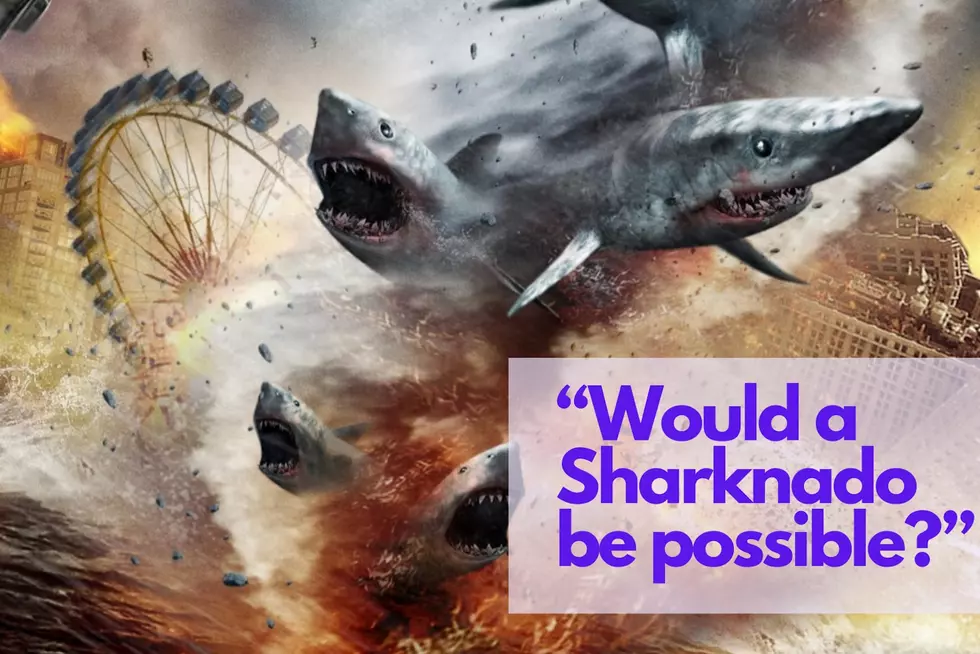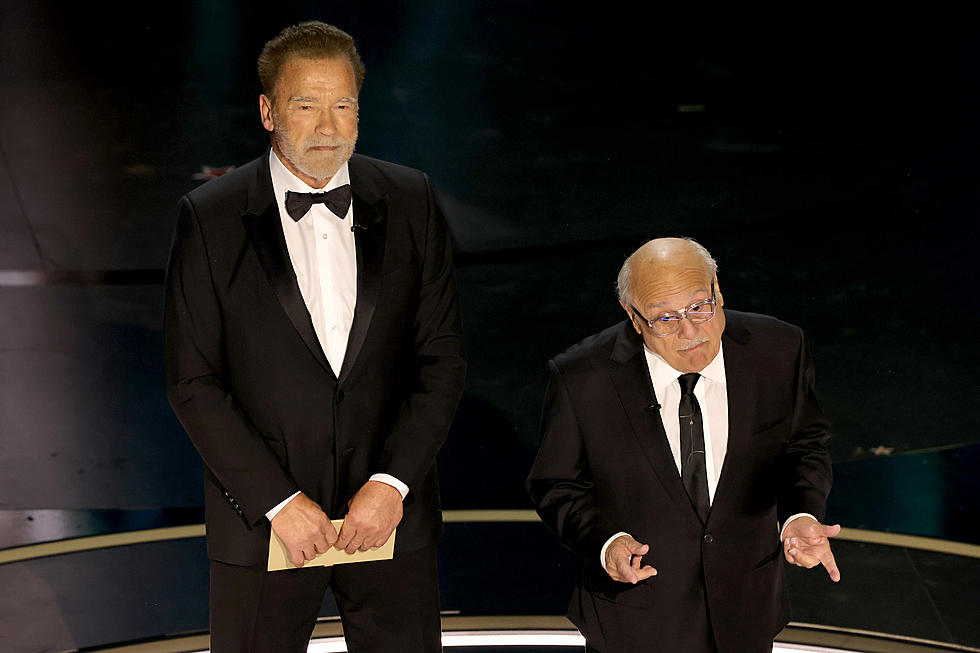
Why Joel Schumacher’s ‘Batman’ Movies Don’t Totally Suck
A figure draped in black smashes through a skylight. With catlike grace, he descends into the room below. He is vengeance made flesh; the walking personification of the night and every fear of what lurks in the darkness. After a perfect landing, he speaks:
“Hi Freeze. I‘m Batman!”
And then he slides down the back of a f—ing dinosaur.
Thus begins 1997’s Batman & Robin, one of the most reviled and ridiculed superhero movies ever. It was a rarity at the time and something that seems like an impossibility now: A Batman movie that was a total flop. It barely eked out $238 million worldwide, less than half of what The Dark Knight made in the United States alone; it is still the least successful film in an otherwise enormously successful series by a very wide margin. It’s also the most poorly reviewed Batman film by an even wider margin; its 11 percent on Rotten Tomatoes is a full 30 points lower than the next-worst-reviewed Bat-movie (although that could change in the near future). The New York Times’ Janet Maslin called it “a wild, campy costume party of a movie” — and that may be the most positive review it got.
Although Warner Bros. had entertained notions of continuing the ’90s Batman franchise with a fifth film, the absolute disaster that was Batman & Robin scuttled those plans. Instead, Warners brought in Christopher Nolan and made Batman Begins, rebooting the Dark Knight from scratch with new creators and stars, and sending him off in a much darker direction. Every Batman movie since then, up to and including the new Batman v Superman: Dawn of Justice, can be seen as a reaction and corrective to director Joel Schumacher’s Batmen, Batman & Robin and its predecessor, 1995’s Batman Forever.
So were Schumacher’s movies really that bad? I mean they’re silly and juvenile and shockingly tacky. I wouldn’t go so far to say they’re good, but they’re not entirely terrible either. Schumacher made some very questionable decisions, but he also made some smart ones as well. In the interest of balancing the record, I made this list of the best stuff in the “worst” Batman movies.
Gorgeous, imaginative production design
Christopher Nolan’s Batman trilogy sported some undeniably impressive visuals. But Nolan’s Gotham City is more or less Chicago; a good portion of his Bat-movies were shot there, and the parts that weren’t were made to look like they were. Joel Schumacher’s Gotham City is Gotham City, a vibrant and surreal world wholly its own. Even more than Burton’s baroque Gotham, Schumacher’s is a land of impossible architecture, vivid splashes of color, and statues the size of buildings. It can be interesting to see what Batman looks like in our world. But it’s also fun to see him explore a new world.
The dreamlike cityscapes are matched by the outlandish interiors. Each set by production Barbara Ling is more impressive than the last, like the Riddler’s glow-stick green island lair.
The frenetic aesthetic got even more amped up in Batman & Robin, with even more outrageous statue buildings and detail-laden sets, like Poison Ivy’s secret laboratory:
The characters and stories that inhabit these spaces aren’t always compelling. Some of the gags are putrid. Purely from a production design standpoint, though, Schumacher’s Batman movies are arguably the best in the franchise’s history.
Val Kilmer’s Batman voice
Even hardcore Nolan acolytes like to poke fun at Christian Bale’s Batman voice, a ludicrously over-the-top growl that sounds a bit like a Bernese mountain dog trying to impersonate a human being. Michael Keaton mostly just whispered when he put on the cape and cowl; George Clooney didn’t even attempt to disguise his natural speaking voice as Batman. (Like a lot of Batman & Robin, he was channelling Adam West and the old ’60s Batman TV show.) Ben Affleck’s Batman uses a microphone to give his dialogue a deep, robotic reverb that makes Bale’s interpretation sound understated by comparison. The best Batman voice to date belongs to Val Kilmer. His Batman speaks softly but confidently, and his dry, even tone helps sell the screenplay’s schlockiest punchlines.
Kilmer’s a good Batman overall, at least as the Batman of Batman Forever. He gets the movie Schumacher’s making, which is both hyper-melodramatic and giddily campy. And he leans into the fetishistic side of Batman. His Bruce Wayne might still be haunted by his parents’ deaths, but he seems to get a sly kick out of his alter ego. This is something a lot of Batman movies, even some of the good ones, miss. Bruce Wayne might start being Batman to avenge his parents’ deaths. But one of the reasons he stays Batman is the thrill. And you can hear that in every word Val Kilmer speaks.
Exciting fight scenes
This is the dirty little secret of the Batman franchise: They’re action movies with mostly middling-to-terrible action. To some degree, particularly in the series’ early days, that couldn’t be helped; the bulky, rubber Batsuit looked fantastic onscreen, but it moved with the flexibility of an iron girder. It took several movies just for Batman to be able to turn his head without shifting his entire upper body. You try having a fight scene in a giant molded unbreathable condom. I can tell you from experience, it’s not easy.
Batman Forever isn’t heavy on action scenes, but the ones that are here are a major improvement over the ones in Batman and Batman Returns. I really like this one that opens the movie. Kilmer’s stunt double moves with speed and grace, and Stephen Goldblatt’s cinematography matches him with some really clever camera angles.
The car chases are crisply edited and exceedingly clear as well. Even if the overall tone of the Schumacher movies is goofy, the action is taken very seriously.
Arnold Schwarzenegger’s ice puns
Speaking of goofy… are there too many ice puns in Batman & Robin? No, because you can’t have too many ice puns.
Schwarzenegger’s endless assault of icy jokes are one of the most notorious aspects of Batman & Robin. And certainly they wouldn’t fit in a Batman movie by Christopher Nolan or Zack Snyder. But they’re right for a Batman movie by Joel Schumacher, who’s not so much adapting the comics as he is taking that Adam West TV show and reimagining it on the grandest scale possible. Holy rusted metal, Batman!
Longtime Schwarzenegger fans also know that wacky puns are a core tenet of his onscreen persona (if you don’t believe me, you can let off some steam). Plus, as broad as Schwarzenegger’s Mr. Freeze is, he actually fits perfectly with all of the themes the actor was exploring in his roles from this era of his career, shortly after his heart surgery when all of his previously unstoppable heroes turned into flawed mortals who fail to rescue their families. (His Freeze is a scientist transformed by cryogenics experiments designed to save his dying wife from a rare disease.) I understand if the quips leave you cold, but just chill on the hate. In this context, they kind of work.
They’re kids movies that kids can actually watch
It was about the time that Batman maimed the fifth or six man, right before he stabbed a guy in the chest and just after he shot a whole crew of enemies with his Batwing’s enormous machine guns, that I started to feel bad for kids who are going to experience the Dark Knight for the first time through Batman v Superman. Dawn of Justice arrives flanked by a giant marketing campaign and plenty of tie-in toys and merchandise aimed at kids, but the movie itself — which features suicide bombers, massive destruction, death, mayhem, unstoppable alien monsters, and beloved heroes trying to murder one another — is not an entertainment for children.
Batman Forever and Batman & Robin feature a few elements designed for adults, like the winking shots of Batman and Robin’s butts in their costumes and the self-referential jokes, but that stuff would go right over kids’ heads; there’s nothing in either movie that could alarm, upset, or emotionally scar a little kid (as opposed to BvS, which seems destined to traumatize young children brought to the theater by unsuspecting parents; note the story recounted in this review). I’m an adult who enjoys comics and comic-book movies, but I don’t think these things should be catering exclusively to me, a 35-year-old man, and it’s nice when this material, which was and largely still is invented to entertain young people, considers and caters to their interests. Maybe that makes Batman Forever and Batman & Robin juvenile. Or maybe, once in a while, it’s okay for a movie about a guy who drives in a car shaped like a bat to be a little juvenile.
Batman is a silly concept, and it doesn’t have to be played straight
Right now, the concept of Batman that’s in vogue is a darker, more serious, more realistic one. And that’s fine. But that’s not the only way to conceive of Batman, or to tell a Batman story. And just because a Batman movie is less realistic doesn’t necessarily make it less good. Tim Burton’s Batman, where a shrimpy 5’10” dude who can’t turn his head is the world’s most imposing fighter, isn’t realistic. Batman: The Animated Series, where vintage cars sit side by side with cellular phones, isn’t realistic. But they’re still great.
That’s because the very idea of Batman is absurd. A man trying to avenge his parents’ deaths by dressing like a giant bat and spending billions of dollars on high-tech equipment and gadgets would have to be completely insane. “Realistically,” this guy would be dead a hundred times over before he got to Ben Affleck’s age in Batman v Superman. Christopher Nolan did a remarkable job taking this preposterous concept and finding real-world relevance within it. But that doesn’t change the fact that the notion of this guy existing in the “real world” is arguably more absurd than the idea of Batman playing hockey with a giant cartoon diamond.
Joel Schumacher’s Batman doesn’t live in the “real world;” when we watch Batman Forever or Batman & Robin, we escape from the real world and go visit his. Schumacher’s Bat-verse is a realm of pure fantasy. To my mind, Batman & Robin doesn’t fail because it’s trying to be campy, but that it simply goes too far; too many gags, too many costume changes, too many villains, too much stuff. The same basically goes for Batman v Superman, which swings that same pendulum too far back in the opposite direction for an overly dark and serious take on the Caped Crusader. (It, too, feels overstuffed with incidents and characters.) It’s not the concept in either case that’s the problem; it’s the excess and the execution. There are plenty of things in the execution of Joel Schumacher’s movies that don’t work. But there are some things that do.
More From ScreenCrush









